Meta Quest 3: Specs, new storage sizes, 3 vs. 3S, and everything you need to know
The mixed-reality Meta Quest 3 is getting some changes thanks to the Quest 3S. Here's what you need to know about it.
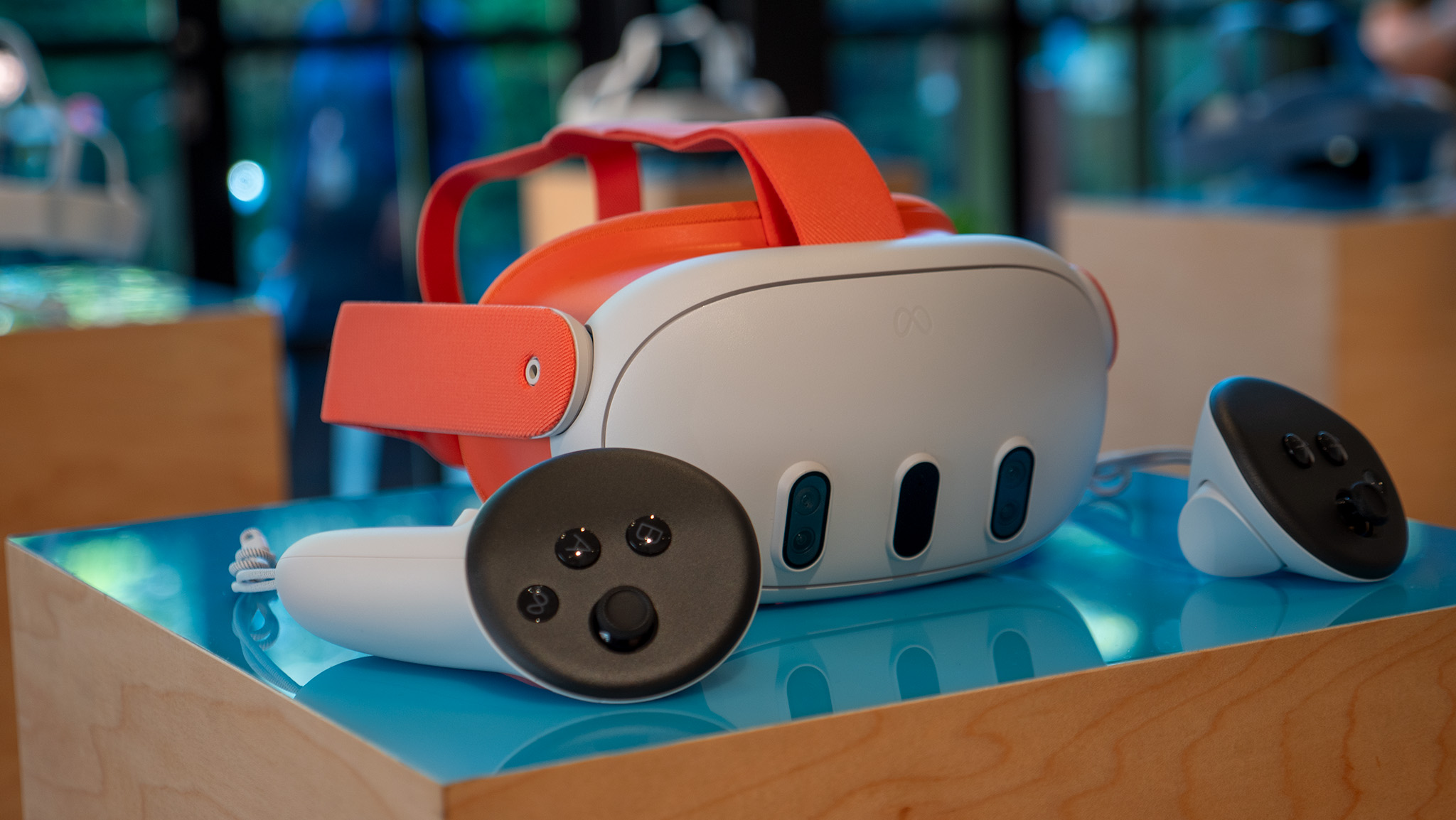
We believe the Meta Quest 3 is the best VR headset available, hitting the right balance between next-gen tech upgrades and affordable compromises. That said, the new Quest 3S has arrived with many of the same perks for less, and you may be wondering whether the higher-end headset is worth it.
We've followed the Quest 3 closely since its late 2023 launch, tracking all of its updates, new games, and software updates. Aside from sharing all the specs and comparisons to other headsets, we'll share everything that new Quest 3 owners or prospective buyers should know about the headset.
If you want a more personal breakdown of what it's like to use the Quest 3, you can read our Meta Quest 3 review for all the highs and lows. In particular, we praised the upgraded mixed-reality passthrough in full color, the more ergonomic controllers, and the revamped graphical power while noting some design issues and poor battery life.
Below, we'll focus instead on all of the raw numbers, prices, accessories, and so on, to help you decide if it's worth upgrading to the new headset or choosing the cheaper Quest 3S instead.
Meta Quest 3: Price and availability
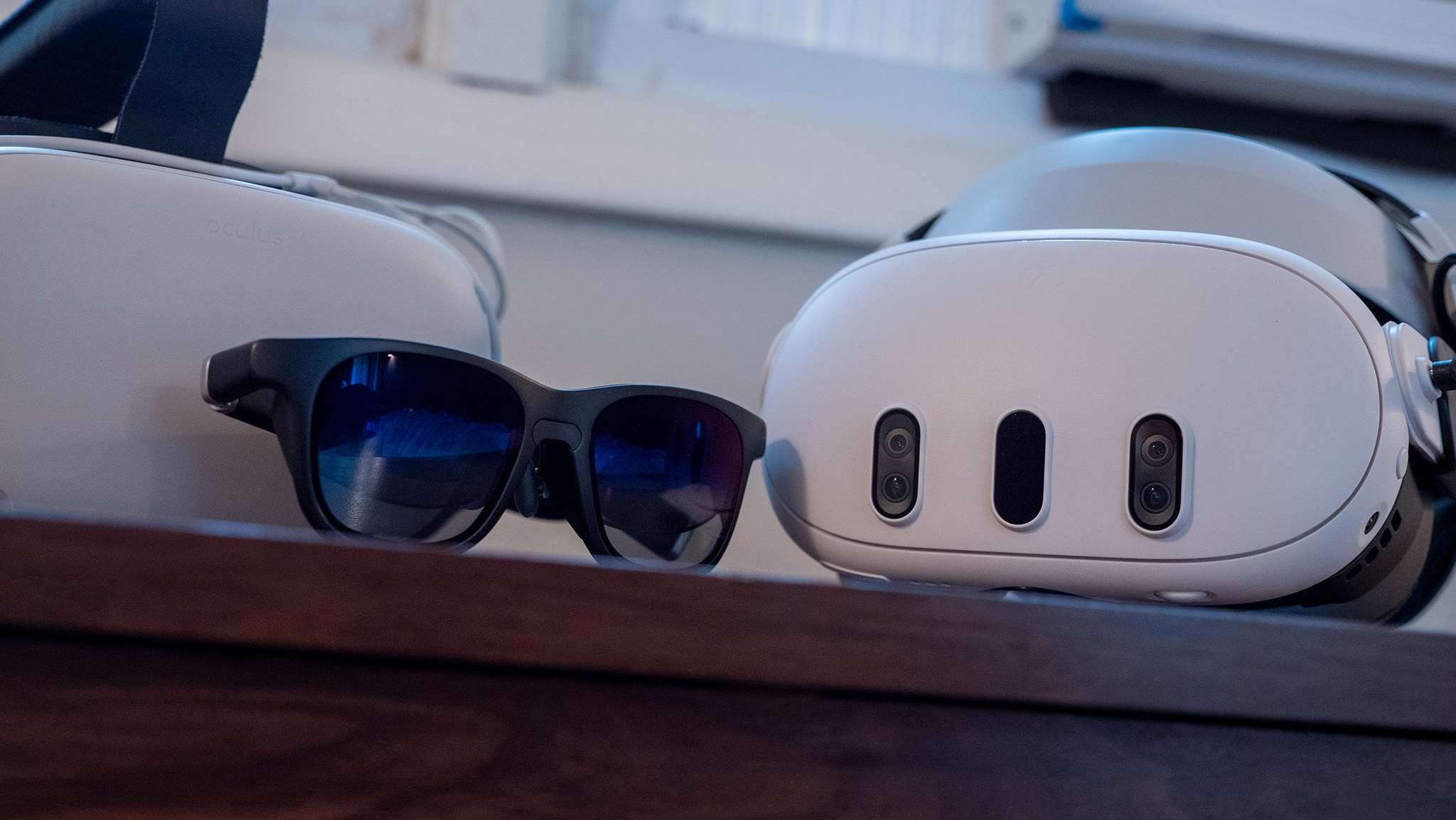
The Meta Quest 3 became publicly available on October 10, 2023. It originally launched in 128GB and 512GB sizes, but at Meta Connect 2024, Meta announced that it would stop selling the 128GB version after selling out the current stock at a lower price ($429) while discounting the 512GB model to the original $499 price of the 128GB headset.
U.S. buyers can pay Meta $29.99/month for 24 months instead of paying $499 upfront; this gets you the Quest 3 512GB, two years of Meta Quest+ ($120), and two years of Meta Warranty Plus protection ($49). You'll pay $720 total, but subtracting the Quest+ sub and accident protection costs, it's only about $550, which isn't that much more. If you don't need these perks, try to pay upfront.
For comparison, the 128GB and 256GB Quest 3S cost $299 or $399, respectively.
Our original 128GB vs. 512GB Quest 3 guide assumed you'd have to pay $649 for extra storage, but the main points are the same: most Quest 3 games measure about 2–3GB in size, but major releases can swell up to 10GB or more — especially with post-launch updates and DLC. 512GB is more than most people need, but if you buy the 128GB model before it sells out, you may have to delete games to make space.
Thankfully, Quest games support cloud storage, so if you do choose the 128GB Quest 3, you can make space in your library and redownload games later.
Meta Quest 3: Design and display
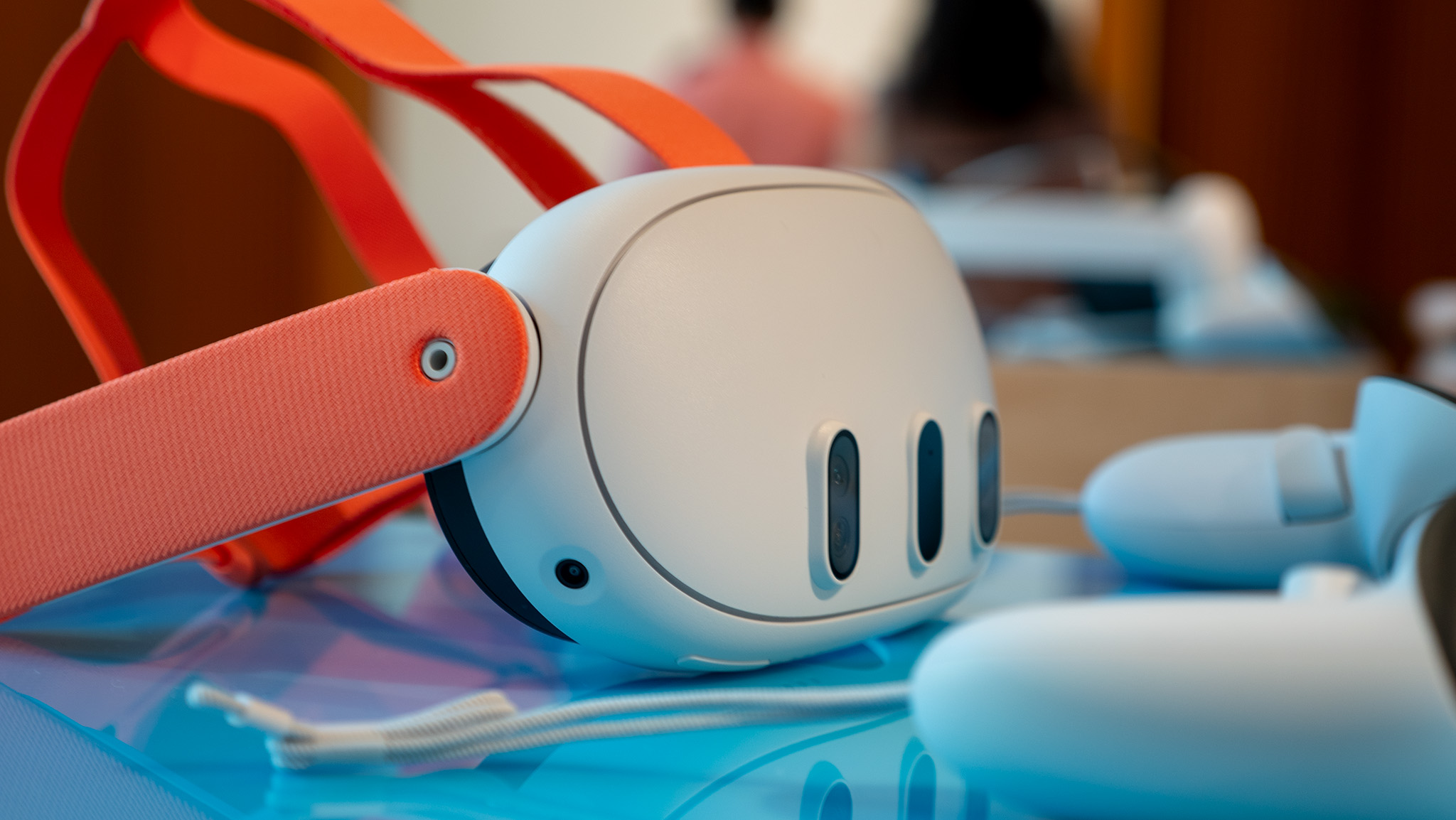
The Meta Quest 3 uses pancake lenses, a design that magnifies the display with thin, reflective mirrors instead of one thick layer. The Quest 3 is about the same weight as the Quest 2 and 3S, but measures significantly skinnier, making it less front heavy. Equally important, they don't have the "sweet spot" of Fresnel lenses; instead of a centered, clear spot, the entire lens is sharp if you look in any direction.
By default, the Meta Quest 3 uses a cloth strap with velcro to adjust the fit. Our Quest 3 reviewer complained that the new split overhead strap design "rubs on the top of your ears," even if it adds extra support. That's why we called a Quest 3 strap replacement the "one accessory you actually need."
Whether you buy the official Meta Elite Strap or a third-party option, it'll give you a more comfortable and secure fit. And many options have a built-in battery that plugs into the USB-C port, doubling the Quest 3's 2-hour battery life. Since the Quest 3 has a modular design, installing a new strap should only take you a few minutes and doesn't require any expertise.
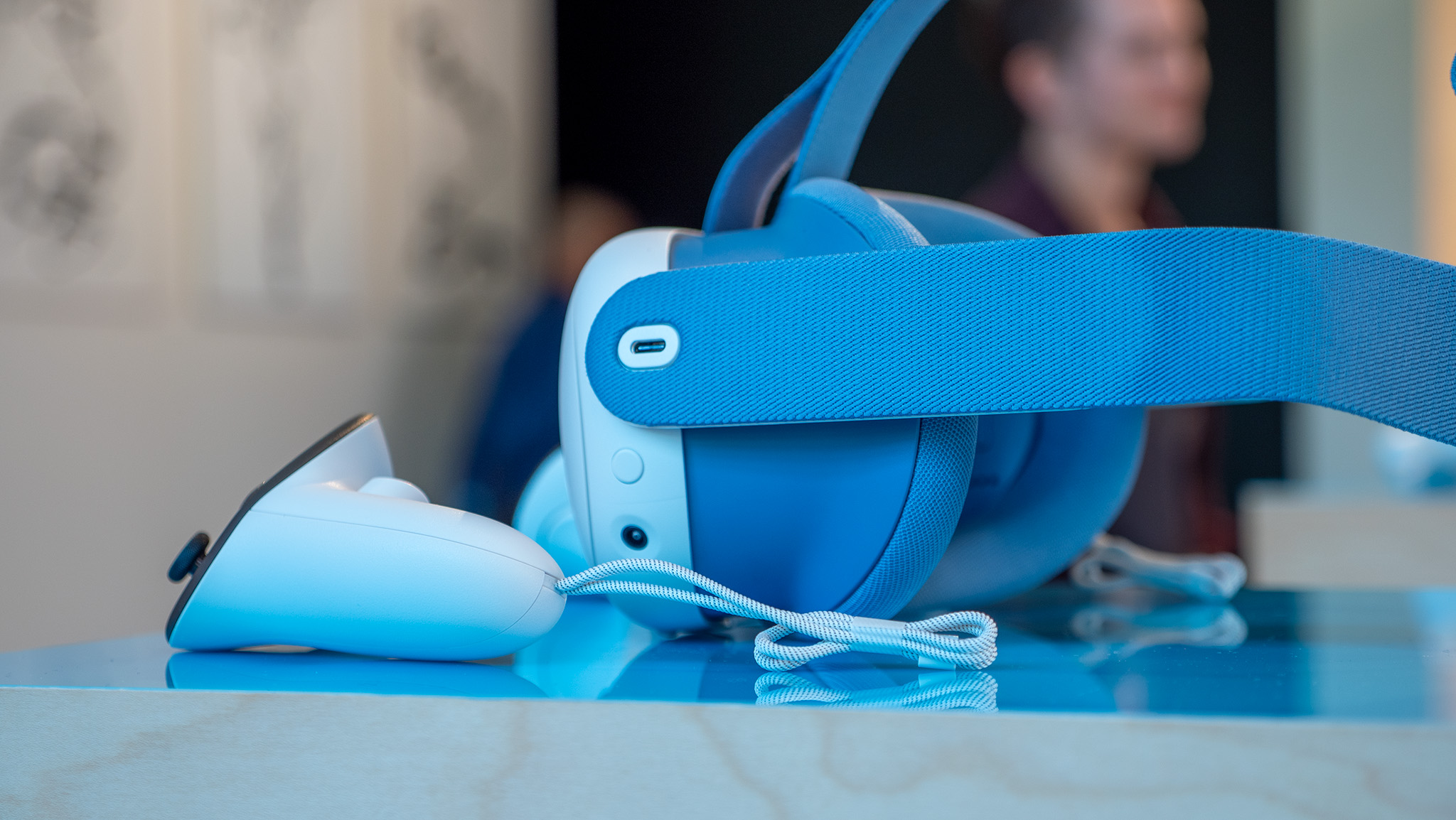
The Quest 3's redesigned facial interface lets you change how close or far the lenses sit from your eyes, with enough room to wear glasses without a spacer if you'd like. It also has a superior interpupillary distance (IPD) wheel with small gaps from 53–75 mm, so you can closely match your face's eye gap. The Quest 2 and 3S only have three default settings (58mm, 63mm, or 68mm).
Our only frustration with the Quest 3 facial interface is the lack of venting, which can cause the lenses to fog up from your face's heat. You may want to look for a third-party facial interface that allows for better air circulation.
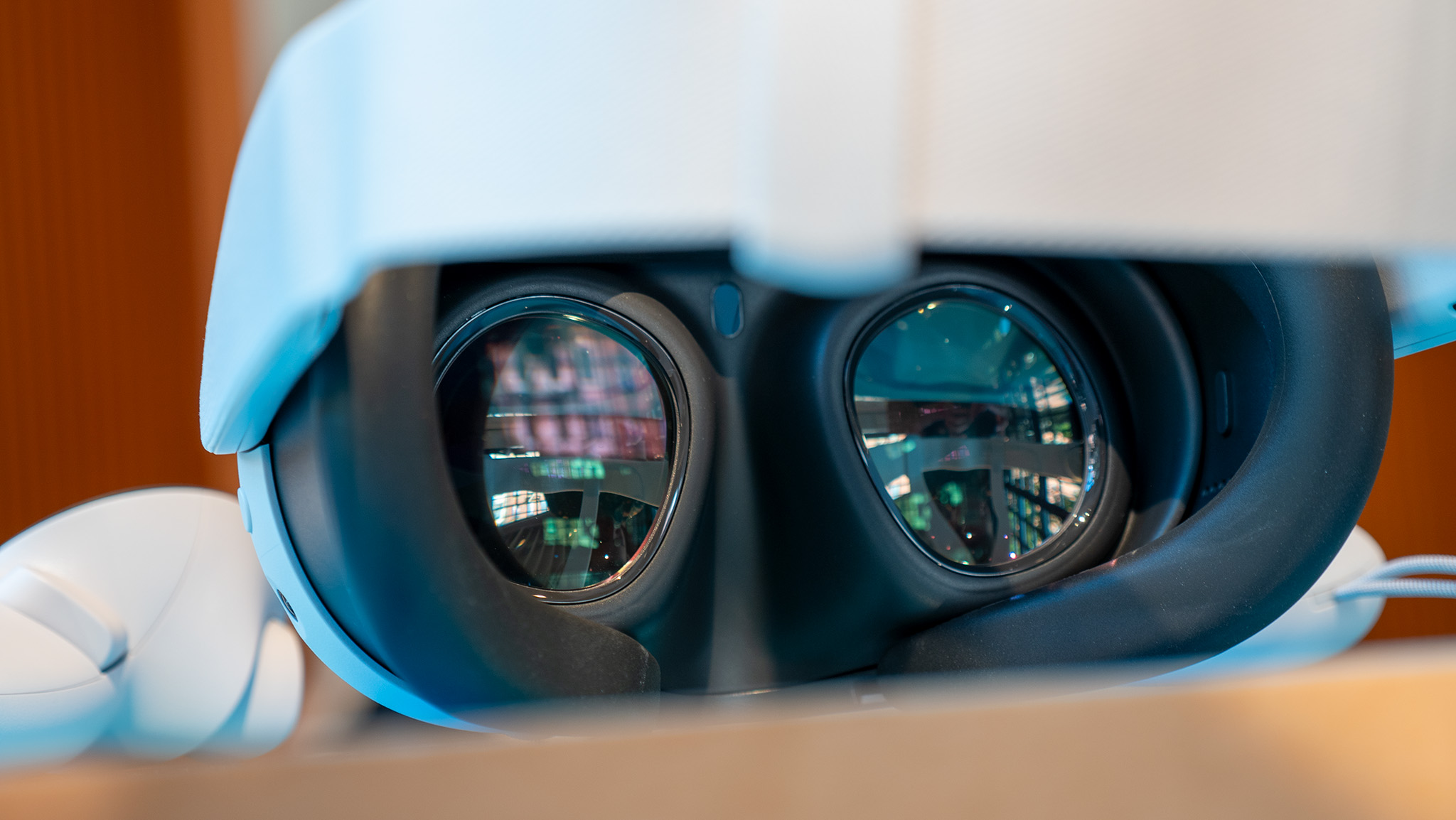
Moving on to the Meta Quest 3 display, it uses an LCD, a cost-saving measure that'll make its colors less vibrant than the PSVR 2's OLED. Putting that aside, though, it's still a significant visual upgrade over the Quest 2 or Quest 3S: 2064 x 2208 pixels per eye instead of 1,920 by 1,832 pixels. That gives you an extra 445 pixels per inch (1,218) or 5 pixels per degree (25).
When using the mixed-reality passthrough, the RGB cameras hit a resolution of 18 pixels per degree. That's lower than what true VR can deliver, but substantially better than the 4 PPD black-and-white passthrough of the Quest 2.
Of course, if you compare the Apple Vision Pro vs. the Quest 3, you'll find that the Vision Pro hits 3,386 pixels per inch or 34 pixels per degree, with micro-OLED displays that offer a gorgeous 92% of the DCI-P3 color gamut. But is this resolution boost worth paying an extra $3,000? Frankly, we're satisfied with what the Quest 3 brings to the table already.
Meta Quest 3 specs
| Meta Quest 3 | Specifications |
|---|---|
| Chipset | Snapdragon XR2 Gen 2 |
| RAM | 8GB |
| Storage | 128GB ($429); 512GB ($499) |
| Display Resolution | 2064 x 2208 pixels per eye (LCD); 1,218 pixels per inch; 25 pixels per degree |
| Display refresh rate | 90Hz; 120Hz (experimental) |
| Field of view | 110º horizontal; 96º vertical |
| Passthrough resolution | 18 pixels per degree |
| Lenses | Pancake (40% slimmer than Quest 2) |
| IPD range | 53mm-75mm |
| Headset dimensions | 184 x 160 x 98 mm, 515g |
| Controller dimensions | 126 x 67 x 43mm, 126g |
| Connectivity | Bluetooth 5.2, Wi-Fi 6E, USB-C |
| Battery life | 2.2 hours (average) |
One of the main reasons for upgrading from Quest 2 is the performance gap. The Quest 3's Snapdragon XR2 Gen 2 has twice as fast graphical performance and improved loading times compared to the Quest 2's Gen 1 chip. You also get an extra 2GB of RAM.
In practice, this allows developers to patch Quest 2 games to add better shadows, lighting, textures, and so on. Plus, of course, you get mixed-reality modes that the Quest 2 can't support with its low-res, black-and-white passthrough.
One thing that hasn't changed with the new generation: the Quest 3 battery life is just as short as the Quest 2's, if not worse. Meta estimates it lasts 2.2 hours per session or 2.4 hours for gaming, but we've found it's usually close to 2 hours flat unless you use a battery pack. Once dead, the Quest 3 takes two hours to recharge; it ships with an 18W power adapter and charging cable in the box.
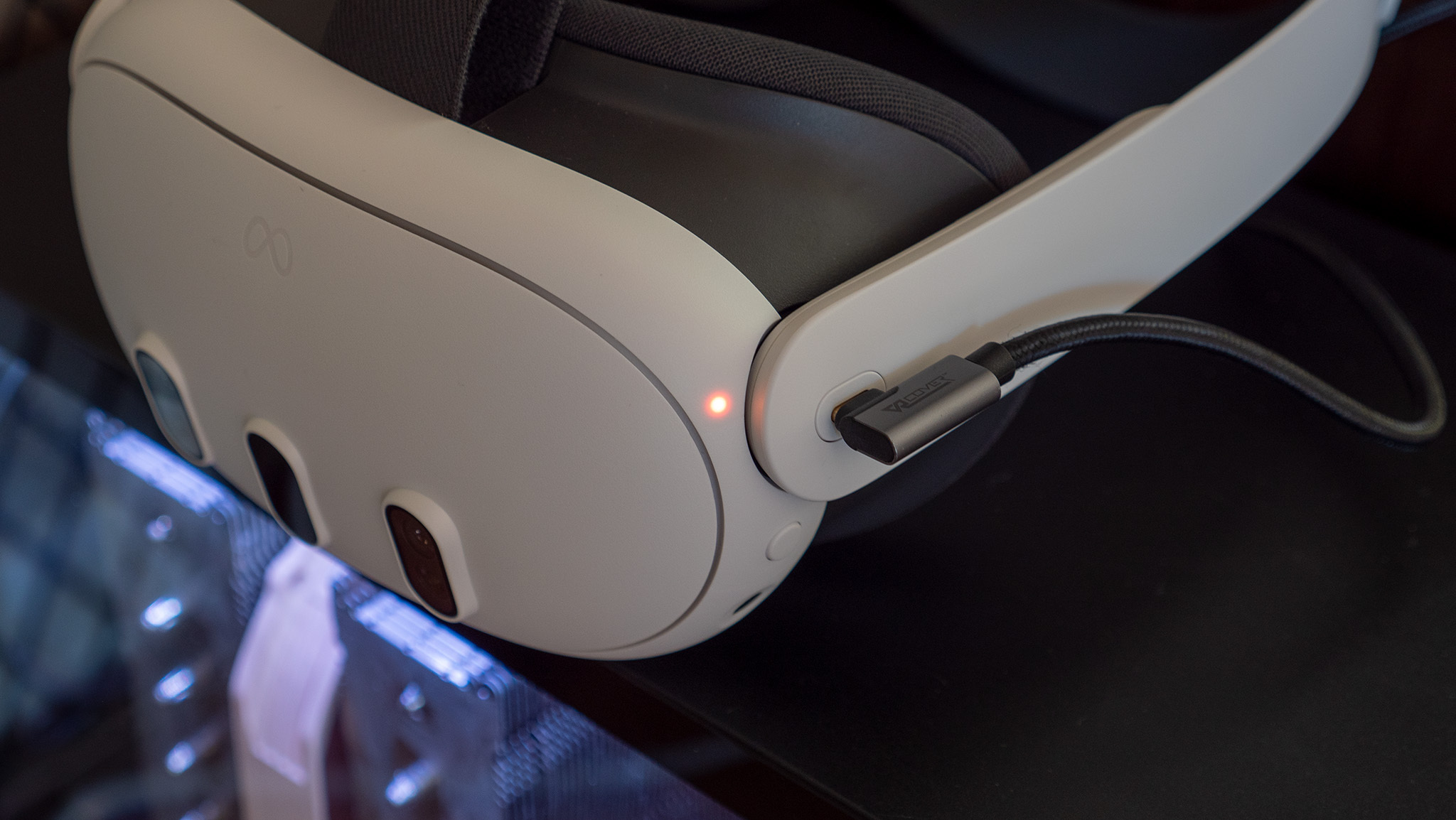
Qualcomm says this chip works with the new Wi-Fi 7 standard, but Meta has only promised support for Wi-Fi 6E routers thus far. The faster Wi-Fi should help with improved PC VR gaming, but you can still stick with a USB-C Link cable for the most reliable connection.
Meta improved the speaker quality for the Quest 3, claiming it hits a 40% louder volume with increased bass compared to the Quest 2. You still have the 3.5mm headphone jack for private audio and sparing your neighbors, but otherwise, you may not need to buy Quest 3 headphones if you're happy with the built-in solution.
Meta Quest 3 vs. Quest 3S vs. Quest 2
| Category | Meta Quest 3 | Meta Quest 3S | Meta Quest 2 |
|---|---|---|---|
| CPU | Snapdragon XR2 Gen 2 | Snapdragon XR2 Gen 2 | Snapdragon XR2 Gen 1 |
| RAM | 8GB | 8GB | 6GB |
| Storage | 128GB ($429); 512GB ($499) | 128GB ($299); 256GB ($399) | 64GB, 128GB, 256GB |
| Display | 2,064 x 2,208 LCD; 1,218 PPI; 25 PPD | 1,832 x 1,920 LCD; 773 PPI; 20 PPD | 1,832 x 1,920 LCD; 773 PPI; 20 PPD |
| FOV | 110º H; 96º V | 96º H; 90º V | 96º H; 90º V |
| Lens | Pancake | Fresnel | Fresnel |
| Mixed reality | 4MP RGB (18 PPD) | 4MP RGB (18 PPD) | B&W Mono (4 PPD) |
| Depth sensor | Hardware | Software | Software |
| Slimness (excluding facial interface) | 62.3mm | 73.9mm | 93.1mm |
| Weight | 515g | 514g | 503g |
| Battery | 5,060mAh | 4,325mAh | 3,640mAh |
| Controllers | Touch Plus | Touch Plus | Touch |
Along with the specs table above, we have full guides on the Quest 3 vs. Quest 2 or Quest 3S vs. 3 that go in-depth on the differences between these headsets beyond the specs.
Basically, the Quest 3S sits between Quest 2 and Quest 3. It has the lenses, display, and storage sizes of the Quest 2 but the processor, memory, and full-color passthrough of the Quest 3.
In our Quest 3S hands-on, our tester noted that wearing it "felt identical to the Quest 2 from my recollection. The lenses and display are identical—including that annoyingly small "sweet spot" to get the clearest view—and adjusting lens spacing is done the same way by physically pushing them closer or further apart."
That said, if you accept the visual downgrade from Quest 3, the Quest 3S has the same gaming enhancements and exclusives, which we'll discuss in the next section.
Meta Quest 3: Games
All of your Quest 2 games will transfer over to the Quest 3, as your account won't change. Our old list of the best Quest games still applies to the new headset, and we can hope to see faster loading times for those games, too.
Most upcoming Quest games will be released simultaneously on the Quest 2 & 3, aside from a few exclusives like Hitman 3 VR, Batman: Arkham Shadow, and various mixed-reality titles that require full-color passthrough.
In terms of Quest 3 and 3S enhancements from the Snapdragon XR2 Gen 2, you can expect shorter loading times, higher refresh rates, 4K textures, improved lighting and shadows, and other graphical improvements; you can see a side-by-side example in the video above. We've also seen games like Walking Dead Saints and Sinners that use the extra graphical power to add more zombies on screen at once.
If you're a new Quest 3 owner, we've recommended the five best Quest 3 launch titles to get you started.
Meta Quest 3: Accessories
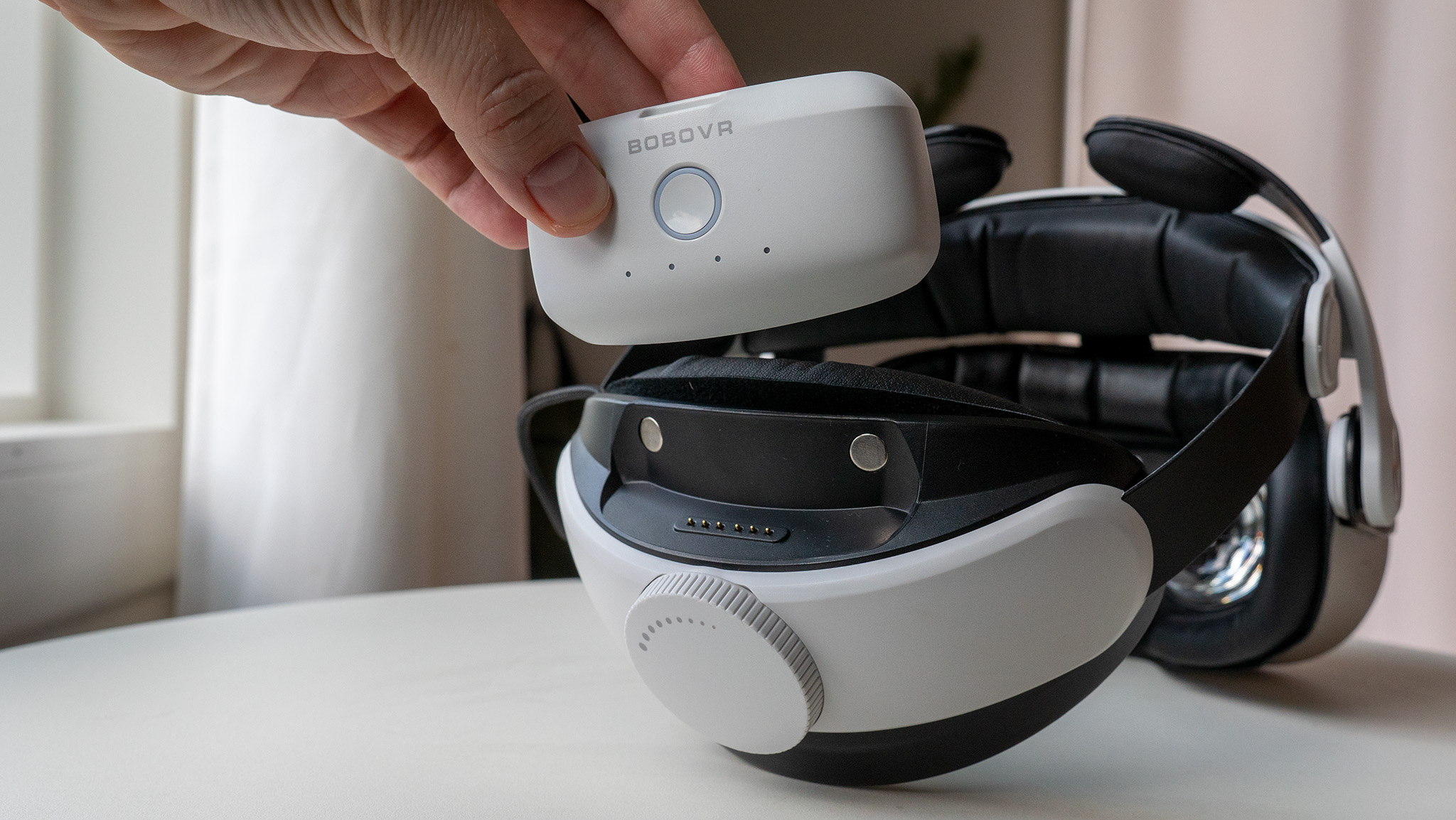
Thus far, Meta has announced these official Quest 3 accessories:
- Meta Quest 3 Silicone Facial Interface ($40)
- Meta Quest Active Straps for Touch Plus Controllers ($40)
- Zenni VR Prescription Lenses for Meta Quest 3 ($50)
- Meta Quest 3 Elite Strap ($70)
- Meta Quest 3 Carrying Case ($70)
- Meta Quest Link Cable ($80)
- Meta Quest 3 Elite Strap with Battery ($130)
- Meta Quest 3 Charging Dock ($130)
- Meta Quest Touch Pro Controllers ($300)
Most of these names will look familiar. You'll buy these Quest 3 accessories to improve the battery life, store and charge the headset, play PC VR games, and so on. One new thing to note: you can now buy straps and facial interfaces in new colors like orange and blue, not just the usual white.
They're also quite expensive! And in one instance, Meta's Elite Strap with Battery had a charging firmware issue that required a recall. The current version for sale is fixed, but it still frustrated people that this expensive accessory didn't work as intended.
Thankfully, third-party Quest 3 accessory makers like BoboVR, AMVR, and KIWI Design have already made more affordable accessories, with more in the works for later this year. Check our guide on the best Quest 3 accessories to see where to get started.
Most of your old Quest 2 accessories won't work with the Quest 3. Thanks to the redesigns to the new headset, most of this old tech won't fit properly. We know that some 3rd-party accessory makers like BoboVR have promised to release mod kits to make your old accessories work, but there's no guarantee every brand will do this.
Your old Link cables will continue to work, if you don't want to rely on Air Link and the new Wi-Fi 6E capabilities for wireless PC VR. And if you own the Quest Pro controllers (normally $300), you can use those in place of the Quest 3 Touch Plus controllers.
Quest 3 post-launch updates
Meta regularly updates the Quest 3 headset with software patches, adding new features and fixing both hardware and software bugs. We regularly cover these updates and will share the highlights below:
- v59 software update: Added a battery saver mode and automatic mixed-reality space setup
- v60 update: Added a new upper body tracking feature to detect your arm, shoulder, and torso movements, as well as fixed mic issues
- v62 update: New spatial videos and hand-tracked pinching gestures, plus livestreaming and new controllers
- v63–64 updates: A lying-down mode in Experimental settings, a new automatic room scanning tool for mapping your living room, and fixed mixed reality visuals with "higher resolution" and better "color, exposure, contrast, and dynamic range."
- v65 update: A new Travel Mode feature for in-flight entertainment and gaming in an airplane or other enclosed spaces, plus support for panoramic photos and more passthrough fixes
- v66 update: Addressed warping around hands and objects in mixed reality, added an option to stream music while gaming, and let you hide apps in your library
- v67 update: New window system for placing and resizing them however you want in your 3D space; also introduced swipe typing and better Do Not Disturb controls
- v68 update: Adds Meta AI to Quest for asking questions about your MR surroundings while wearing the headset. Also pings you when you take off the headset with a low battery as a reminder, improved graphical performance for VR/ MR, and other fixes
- v69 update: Seamless Multitasking lets you open a 2D app like YouTube in-game without having to navigate away. Voice commands now use Meta AI, and the headset now supports styluses.
The current rumor is that the Quest 4 and Quest 4S won't arrive until 2026. If you're in the market for a new VR headset, that's a long time to wait.
At the moment, the Meta Quest 3 is the best VR headset available today. Apple fans might argue for the Vision Pro, but the Quest 3 costs 1/7 the price, has no wires to deal with, and has a proper library of games that'll appeal more to everyday VR fans.
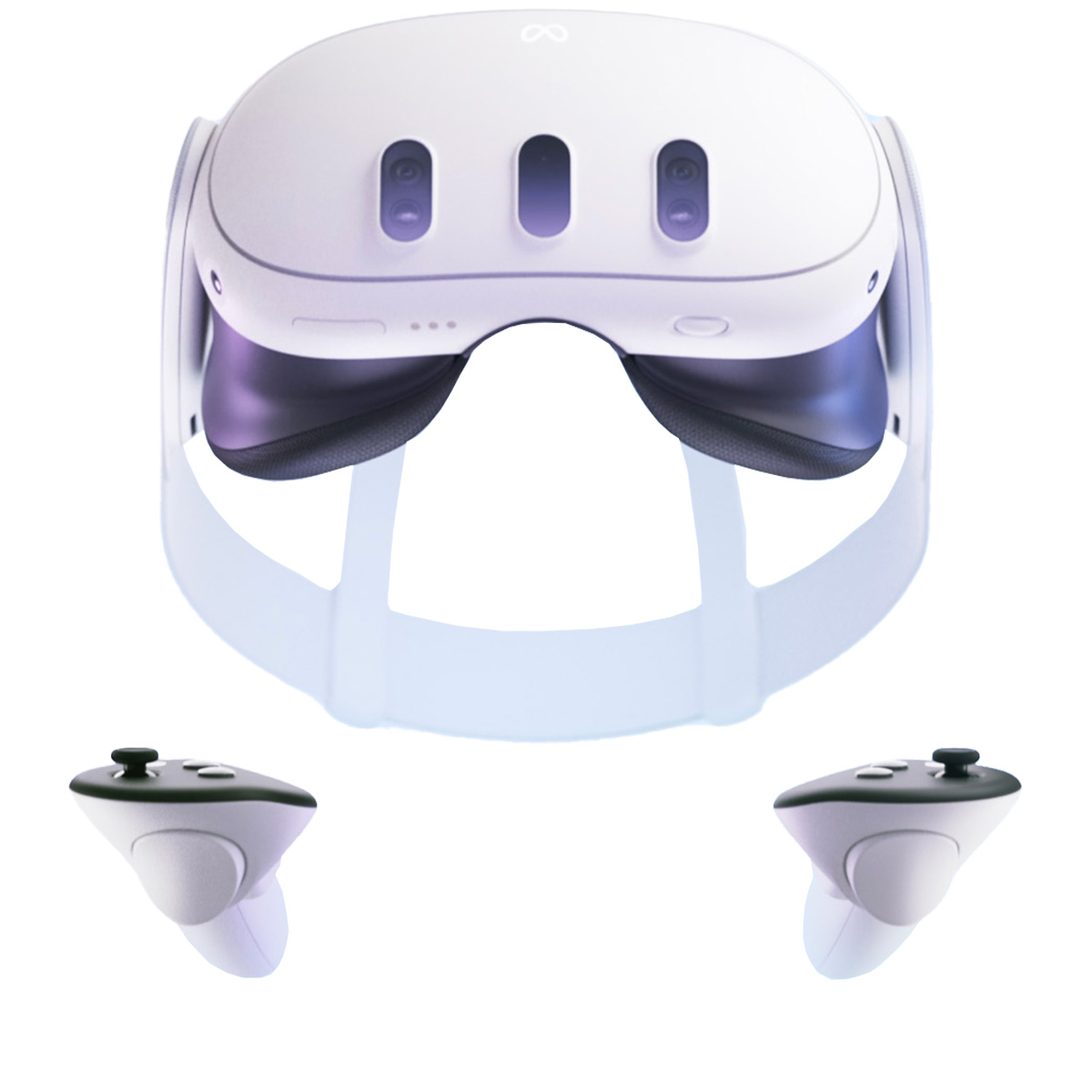
Meta's latest
The Meta Quest 3 VR headset delivers powerful Snapdragon XR2 Gen 2 performance, a more balanced and comfortable design, full-color mixed reality, and one of the best VR displays we've ever seen.
Be an expert in 5 minutes
Get the latest news from Android Central, your trusted companion in the world of Android

Michael is Android Central's resident expert on wearables and fitness. Before joining Android Central, he freelanced for years at Techradar, Wareable, Windows Central, and Digital Trends. Channeling his love of running, he established himself as an expert on fitness watches, testing and reviewing models from Garmin, Fitbit, Samsung, Apple, COROS, Polar, Amazfit, Suunto, and more.
- Nicholas SutrichSenior Content Producer — Smartphones & VR

